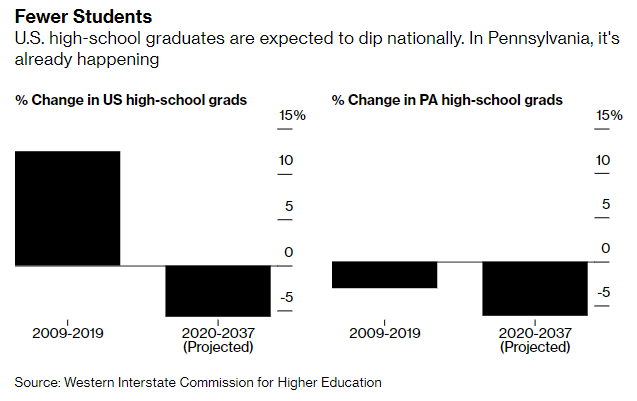It remains a busy time here at AACRAO with the upcoming Technology Summit summit, a convening of the participants of the debt and equity project, and the Strategic Enrollment Management Conference,
to name a few. We are also busy writing the report for the convening and starting to look at the data from the national survey on registration and transcript hold practices. This next statement will date me a bit, but there is a movie quote that keeps
popping in my head when I look at the debt amounts reported in the debt and equity study. I “hear” the newspaper delivery boy from one of the classic John Cusack movies from the 80s, Better Off Dead, call out, “I want my two dollars!”
Keep an eye out for data from both projects to help put that earworm in context.
As always, a major thanks to everyone who participates in our surveys.
AACRAO Research Update
Registrar’s Career Profile Report
The 2021 report is now available. More
than 700 U.S. registrars participated in this research.
Registration and Transcript Hold Practices (AKA Stranded Credits Part Two)
This survey recently closed, and we received a representative sample of U.S. undergraduate serving institutions. Emerging data include:
5% do not use a hold that prevents a student from accessing a transcript
Among those who do, 11% only notify a student of a transcript hold when the student requests a transcript; just 3% of institutions only notify a student of a registration hold when they attempt to register
77% agree “a lot” or “a great deal” with this statement, “Our institution uses a registration hold as a means to get a student to take an action”; just 1% “none at all”
Among the institutions that withhold a transcript for an unpaid balance, 49% do so for any amount greater than zero; 29% stop registration for any unpaid balance greater than zero
The report based on this dataset will be released before the Thanksgiving break.
Re-envisioning Transfer Student Recruitment and Admissions
Update: This project has been deferred to later this fall at a date TBD. The project will focus on recruitment and admissions policy, practice, and staffing for transfer students. This survey will be deployed to all AACRAO primary contacts and
will be incentivized.
Recognition of Excellence in Supporting Transfer Student Success
The report from this workgroup has been posted to this page.
Current Higher Education Research and Related Topics
Major declines seen in Transfer Student Mobility
New data from the National Student Clearinghouse indicates that the enrollment of nearly every type of transfer student declined in the last year. In addition, transfer student
enrollment fell at twice the rate of non-transfer enrollment. Other key points include:
Upward transfer enrollment from two-year to four-year colleges was less affected but still declined
Historically Black Colleges and Universities (HBCUs) were mostly unaffected.
Hispanic-Serving Institutions (HSIs) had substantial transfer student losses this year.
Report recommends changes to Financial Aid Offer

A new report from the American Talent Initiative suggests improvements to financial aid offers that would make them more useful and usable by students.
Key recommendations include:
Emphasize how much students will owe (their net price)
Break down costs; show= direct costs (tuition, etc.) and indirect costs (books, transportation)
Use plain language rather than jargon
Explain loans and work-study well, as students often find these areas confusing
Direct students to other resources such as web pages or financial aid staff
Use good graphic design elements to enhance the offer
Fewer High School Graduates Will Affect Institutions in the Near Future

An article in Bloomberg Wealth examines the effects of a drop in high school graduates on colleges in Pennsylvania. The state
is seen as an early example of a nationwide trend of decreasing numbers of high school graduating seniors. Private undergraduate colleges are particularly hard-hit by this trend. The article also examines the effects on tuition, bond ratings, and
the steps some colleges are attempting to take to shore up enrollment.
Research on the Mergers of Public Colleges and Universities Calls for an Examination of Equity
New research from Ithaka S+R examines the effects of mergers and consolidations in higher
education. The pressure to consolidate has been accelerating, for years and especially during the pandemic. The paper looks at three case studies in-depth that focus on the university systems in Georgia, Texas, and Wisconsin. The paper offers insights
into key lessons learned and makes recommendations for how to effectively look at consolidation.
Out-of-State Students May Not Add Revenue at Higher Rates
A new study has found that out-of-state students may not be the generator of revenue that many institutions perceive them to be. The author found that increased percentages of students
from out of state are actually associated with decreases in tuition revenue and are often associated with lower per-student spending. Potential explanations include:
Latinx Students Face Different Obstacles in Higher Education
Research finds that Latinx student’s enrollment and graduation rates are affected by different factors than other students. Debt
aversion and transportation issues were seen as major challenges by Latinx students. Key takeaways from this research include:
Communication about debt must address its complexities
Latinx students should get customized information about higher education financing from authorities they trust.
Interventions must be delivered at every level-- individual, family, institutional, and structural.